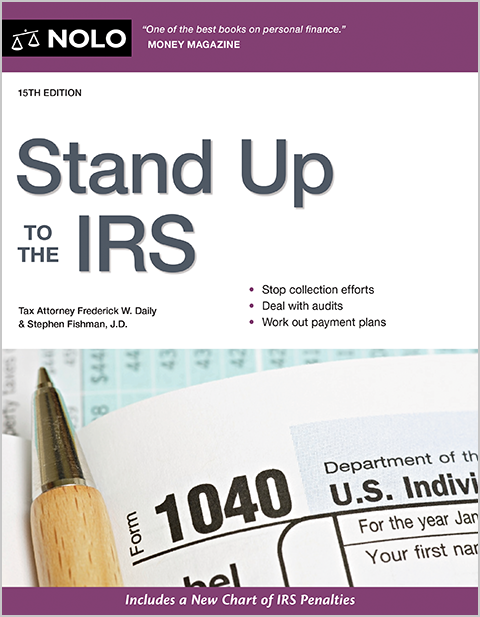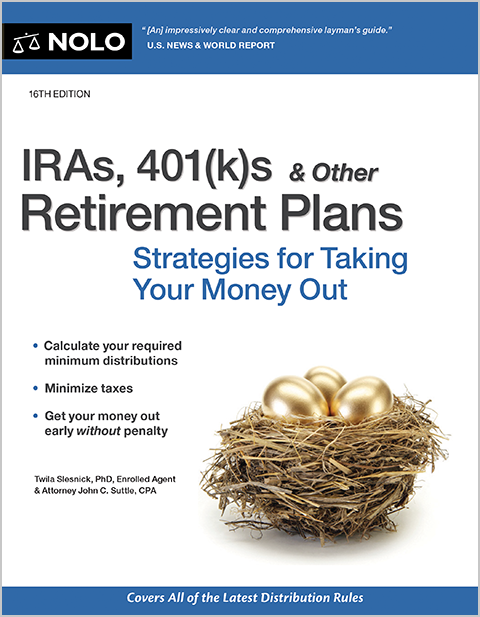Learn what estimated tax penalties are and how to avoid them.
Learn what estimated tax penalties are and how to avoid them.
When You Must Pay Estimated Taxes
You must pay estimated taxes on certain types of income that are not subject to withholding, such as income from self-employment, dividends and interest, rent, alimony, and prizes or other winnings. When you pay estimated taxes, you are paying both income taxes and self-employment taxes. In general, you must pay estimated tax when:
- you expect to owe at least $1,000 in tax after your withholding and refundable credits, and
- you expect your withholding and refundable credits to be less than the smaller of (1) 90% of the tax to be shown your tax return, or (2) 100% of the tax shown on the previous year's tax return.
Penalties for Underpaying Estimated Taxes
The penalty rate for the underpayment of estimated taxes may differ from year to year, and the amount of your penalty depends on your particular circumstances. In most cases, the Internal Revenue Service (IRS) will figure any penalty that you owe for the underpayment of estimated taxes, and send you a bill for the penalty amount. However, you may need to figure the penalty yourself in certain situations. The penalty for the underpayment of estimated taxes is figured separately for each payment period of estimated taxes. In order to figure your penalty amount, you must use IRS Form 2210, which contains both a short and regular method for determining your penalty. Essentially, you first must determine the amount of tax that you have underpaid. Form 2210 then can guide you through the process of figuring your penalty amount, which is directly based on the amount of your tax underpayment.
Generally, if you do not make at least a minimum payment for a certain payment period, you will owe a penalty. Likewise, if you miss a payment for a certain payment period altogether, then you will owe a penalty from the date the payment was due until the date the payment is made.
When Penalties for Underpaying Estimated Taxes Are Charged
You may have to pay a penalty when you do not pay enough taxes, either through automatic withholding or through the payment of estimated taxes, or a combination of both. Furthermore, if you do not pay enough taxes by the due date of each estimated tax payment, you may have to pay a penalty, even if you are entitled to a tax refund.
There are some exceptions to the general penalty rules for underpaying estimated taxes. For instance, if your total tax is less than $1,000, you will not have to pay a penalty for underpaying estimated taxes. Similarly, if you had no tax liability in the previous year, and you were a U.S. citizen or resident for the entire year, you will not be subject to a penalty for underpaying estimated taxes. Therefore, if you did not have to file a tax return for the previous year, you will not be penalized for an underpayment of estimated taxes.
When Penalties for Underpaying Estimated Taxes May Be Waived
There are selected circumstances in which the IRS may waive your penalty for underpaying estimated taxes. First, the IRS may agree to waive your penalty if you failed to make an estimated tax payment due to a casualty, disaster, or other unusual situations. In this case, the IRS may decide that it would be inequitable to impose the penalty on you, given your circumstances.
The other situation in which the IRS may agree to waive your penalty for underpayment of estimated taxes applies only if you meet the following requirements:
- you retired after age 62 or you became disabled
- you had reasonable cause for not making the payment, and
- you did not willfully neglect to make the payment.
If you meet these conditions, then you are eligible to request a waiver of the penalty for underpaying estimated taxes.If you think that you qualify for a waiver of the penalty for underpaying estimated taxes based on the reasons above, then you will need to file IRS Form 2210 in order to request a waiver. Along with Form 2210, you will need to write a statement explaining why you did not make the estimated tax payment, and designating the time period for which you are requesting a waiver. You also must provide documentation of your circumstances, such as evidence of your age and retirement date, documentation regarding your disability, or proof of a casualty, disaster, or other unusual situation, such as a police report or an insurance company claim or report.
Tips for Avoiding Underpaying Estimated Taxes
There are a number of simple steps that you can take to avoid underpaying your estimated taxes. If you do not underpay your estimated taxes, then you also will avoid any penalties imposed by the IRS for underpayment.
- If your income is less than $150,000, make sure that your estimated tax payments, along with any tax withholding and refundable credits, will equal at least 100% of the total tax that you paid in the previous tax year.
- If your income is more than $150,000, make sure that your estimated tax payments, along with any tax withholding and refundable credits, will equal at least 110% of the total tax that you paid in the previous tax year.
- If you can correctly estimate your income for the current tax year, pay at least 90% of the tax that you will owe on your estimated income. However, this may be difficult or even impossible if you cannot accurately estimate your income for the year.
Use IRS Form 1040-ES to correctly figure your estimated tax.
Adjust any withholding of taxes to accommodate your situation. For instance, if you have a primary job where taxes are automatically withheld, but you also have rental or self-employment income, then you may wish to have additional tax withheld from your regular paycheck in order to cover taxes owed on your other income. This strategy may allow you to avoid paying estimated taxes altogether.
Talk to a Tax Attorney
Need a lawyer? Start here.
How it Works
- Briefly tell us about your case
- Provide your contact information
- Choose attorneys to contact you
- Briefly tell us about your case
- Provide your contact information
- Choose attorneys to contact you

